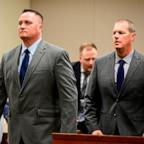Fed Cuts Rates Quarter Point
The last time interest rates were this low was December 2004.
April 30, 2008— -- The Federal Reserve once again cut a key interest rate, trying to do whatever it can to keep the economy from grinding to a complete stop.
Today's quarter-point cut brings the Fed Funds interest rate to 2 percent. It was the seventh such cut since September, when the central bank first started to lower rates — then at 5.25 percent — in response to a collapsing housing market and the tightening of credit.
The last time interest rates were this low was December 2004.
This cut might be the last one for a while. Many economists and investors expect that at some point soon the Fed will take a pause in its rate-cutting.
"Recent information indicates that economic activity remains weak. Household and business spending has been subdued and labor markets have softened further," the Fed said in its statement. "Financial markets remain under considerable stress, and tight credit conditions and the deepening housing contraction are likely to weigh on economic growth over the next few quarters."
How Is the Economy Treating You? Tell ABC News
While Wall Street investors typically like such moves, this rate cut is likely to have little, if any, impact on most Americans. Rates on mortgages, credit cards, student loans and other types of loans in the past benefited from such a cut, but now are unlikely to change substantially because of this move.
The latest cut, however, could mean higher gas prices for Americans.
Nevertheless, Joel L. Naroff, president and founder of Naroff Economic Advisors, said the Federal Reserve made the right decision.
"Cutting one more time, it doesn't do a whole lot," Naroff said. "But it's a chance for the Fed to signal that it intends to stop the rate reductions. The simple fact is short-term rates are low already. They don't need to go a whole lot lower. The problem is not the level of rates, the problem is the availability of money and that's the credit crunch, liquidity problem."
Naroff said the Fed's work isn't done, and it must now shift away from cutting interest rates and focus on finding ways to provide more working cash to the banks to make loans.
"If they cut interest rates to 1 percent today, that wouldn't cause the financial institutions to suddenly start lending lots of money," he said. "The problem is, they're not willing to lend money because they've become so conservative because of all the losses they've absorbed."
For the Federal Reserve, setting the nation's momentary policy has always been a balancing act.
On one side of the scale, the central bank wants to keep interest rates low to make it easier for individuals and companies to borrow money — essentially to stimulate growth. But on the other side, the Fed runs the risk of making interest rates too low, creating too much inflation and pricing Americans out of everyday goods.




